What is a Keloid? scar?
A keloid scar is a firm, smooth, hard growth due to spontaneous scar formation. It can arise shortly after an injury or develop months later. Keloids can be uncomfortable or itch and spread far beyond the original wound. They can form anywhere on the body, although the upper chest and shoulders are especially prone to them.
The precise reason why wound healing sometimes leads to keloid formation is under investigation, but remains unclear.
While most people never form keloids, others develop them after minor injuries, burns, insect bites, and acne spots. Dark-skinned people form keloids more easily than Caucasians.
A keloid is harmless to general health and does not transform into skin. Cancer.
Keloid scar
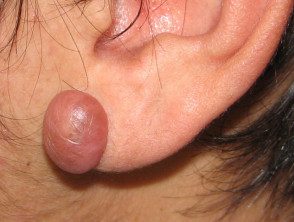

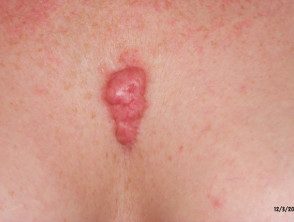
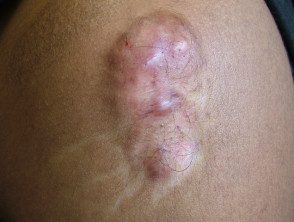
See more images of keloid scars.
What is a hypertrophic scar?
As the wounds heal, scar tissue forms, which is usually red and somewhat prominent at first. Over several months, a scar generally becomes flat and pale. If there is a lot of tension in a healing wound, the healing area is much thicker than usual. This is known as a hypertrophic scar. A hypertrophic scar is limited to damaged skin.
Hypertrophic scars
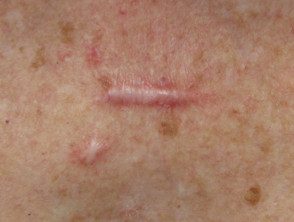
Hypertrophic scar
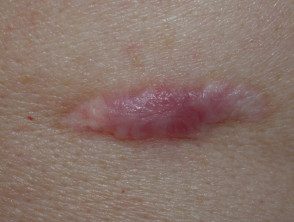
Hypertrophic scar
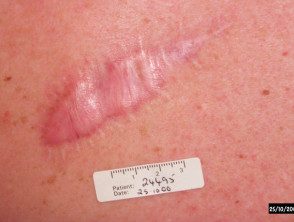
Hypertrophic scar
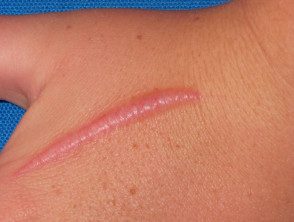
Hypertrophic scar
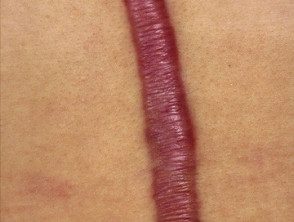
Hypertrophic scar
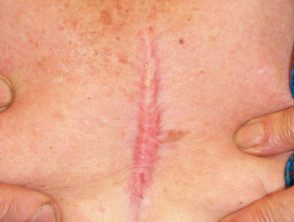
Hypertrophic scar
More images of various types of scars ...
What is the treatment of a hypertrophic or keloid scar?
A hypertrophic scar usually settles on time or with treatment, but a keloid may persist and be resistant to treatment. The following measures are useful in at least some patients.
- Emollients (creams and oils)
- Polyurethane or silicone scar reduction patches
-
Silicone gel
- Oral or current tranilast (an inhibitor of collagen synthesis)
- Pressure dressings
- Surgical excision (but in keloids, cleavage can result in a new keloid even larger than the original one)
-
Intralesional corticosteroid injection, repeated every few weeks.
- Intralesional 5-fluorouracil
- Cryotherapy
- Superficial X-ray treatment shortly after surgery.
- Pulsed dye To be
- Skin puncture
- Subcision
Scar dressings should be worn for 12 to 24 hours per day, for at least 8 to 12 weeks, and perhaps for much longer.
